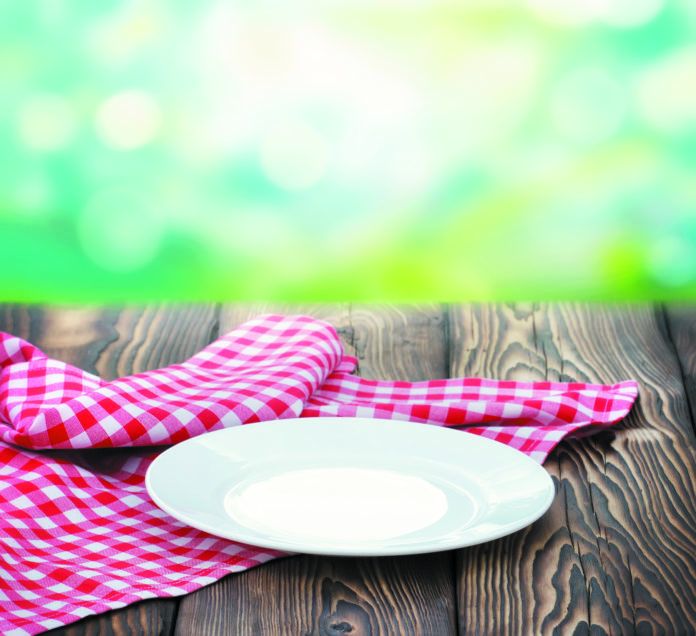It’s picnic and cookout season. With warm weather and the loosening of some social distancing restrictions, many of us are venturing outside…and taking our food with us. In addition to measures to keep yourself safe from viral infection, don’t forget to take simple steps to reduce risk of foodborne illness. Clearing up some common misconceptions about outdoor food safety may help:
MYTH #1: The last meal I ate is to blame.
Symptoms like diarrhea, vomiting, fever, and stomach cramps can actually begin anywhere from a few hours to several days after eating contaminated food. Symptoms of infection with Salmonella bacteria, for example, can strike one to three days after infection, while E. coli illness might not show up for eight days.
The Centers for Disease Control and Prevention estimates one in every six Americans suffers from food poisoning in a given year. While some people experience minor symptoms, there are over 125,000 hospitalizations and 3,000 deaths annually from foodborne illnesses. Older adults, young children, pregnant women, and people with weakened immune systems or preexisting conditions are at higher risk.
While food can get contaminated at any point from the farm to the home, preparing food with unwashed hands, undercooking, keeping food at an incorrect temperature, or leaving it out too long are common problems we can control.
Be prepared. Planning ahead can help ensure food safety on your next outing. “Envision where you’re going and what you’re going to do,” says Helen Rasmussen, PhD, RD, LDN, FADA, senior research dietitian at Tufts University. “Don’t forget soap, a gallon of fresh water for cleaning hands and utensils, towels, and sanitizing wipes or gel. Some of the things we’ve learned to do to protect ourselves from COVID-19 (like good hand washing and disinfecting surfaces) apply to protecting ourselves from foodborne illness as well.” Consider adding a food thermometer to your bag of cooking and serving utensils.
MYTH #2: It’s the mayo.
Contrary to popular belief, mayonnaise is usually not to blame when people get sick from picnic fare. In the past, mayonnaise was made at home using unpasteurized eggs that could harbor Salmonella and other bacteria. Store-bought mayo is made using pasteurized eggs. The vinegar in mayonnaise is an acid that helps prevent bacterial growth. The low acidity of ingredients like potatoes, chicken, pasta, or hard-boiled eggs that are mixed into “salads” may offset the acidity of the mayo.
Keep cold food cold. To discourage bacterial growth, cold foods should stay below 40° Fahrenheit. Cool perishable foods completely in the refrigerator at home and move them into a cooler just before leaving. Be sure to have adequate ice packs or ice. If possible, pack uncooked meats, poultry, and seafood in a separate cooler—away from foods that will not be cooked—to prevent leakage and cross contamination. A separate beverage cooler is also a good idea, as frequent opening of a cooler to get drinks causes the temperature inside to rise faster.
Transport coolers inside the air-conditioned car, rather than in the much hotter trunk. Never leave coolers in a hot car. “If you let food sit in your unairconditioned car, bacterial growth may occur,” says Rasmussen. Place coolers of food in a shady spot and cover with a blanket for insulation and to discourage frequent opening.
Don’t let food sit out longer than two hours (one hour if it’s 90°F or hotter outside). Consider placing ice beneath bowls of perishable food on the serving table.
MYTH #3: Cooking kills any pathogens.
Cooking meat, poultry, and seafood will destroy most harmful organisms—if you cook them to a high enough temperature. But they also need to be kept in a safe temperature range to stay safe.
Keep hot food hot. Use a food thermometer to be sure beef, pork, and fish are cooked to 145°F and poultry and ground beef to 165°F. To prevent recontamination after cooking, always dispose of leftover marinade or sauces and never use the plate, cutting board, or utensils from raw meats for cooked meat and other items, at home or away. Between 40°F and 140°F is the “danger zone” where bacteria can grow. As with cold food, don’t keep hot food out longer than two hours.
Try these tips to help protect yourself and your loved ones from foodborne illness when preparing for a picnic:
- Dispose of food that has been in the danger zone (between 40°F and 140°F) for more than two hours (or one hour if the outdoor temperature is over 90°F).
- Keep cold food below 40°F. Pack plenty of ice or ice packs and keep cooler chests in the coolest environment possible.
- Transport raw meats, poultry, and seafood apart from other foods, cook thoroughly, and never use the same utensils, plate, or cutting board for raw and cooked foods.
- Discard food immediately if it looks or smells bad (although most pathogens do not cause obvious changes to food).

























“The low acidity of ingredients like potatoes, chicken, pasta, or hard-boiled eggs that are mixed into “salads” may offset the acidity of the mayo.”
The lack of acidity in … would make this sentence easier to understand for those who aren’t using the ph scale a lot